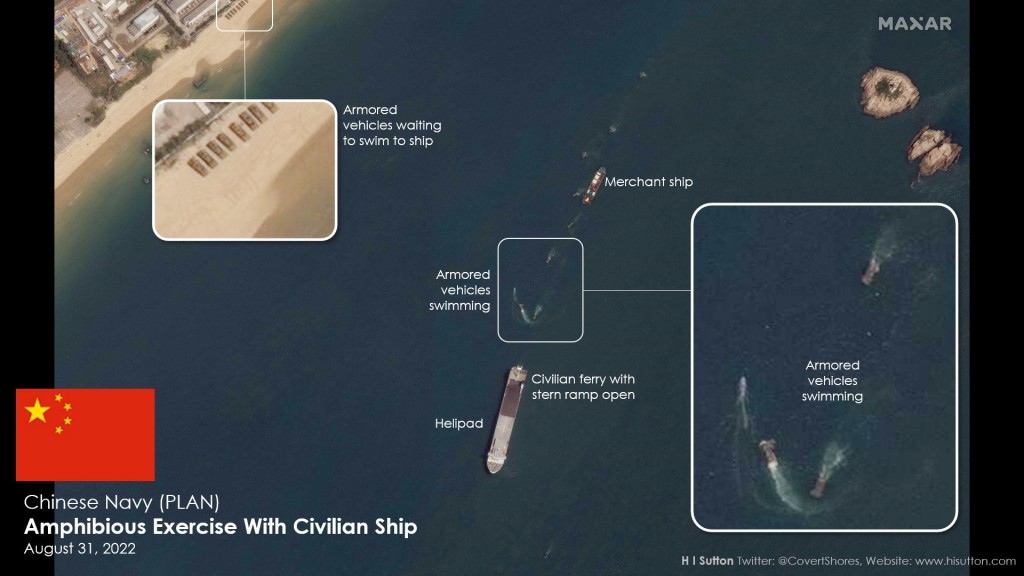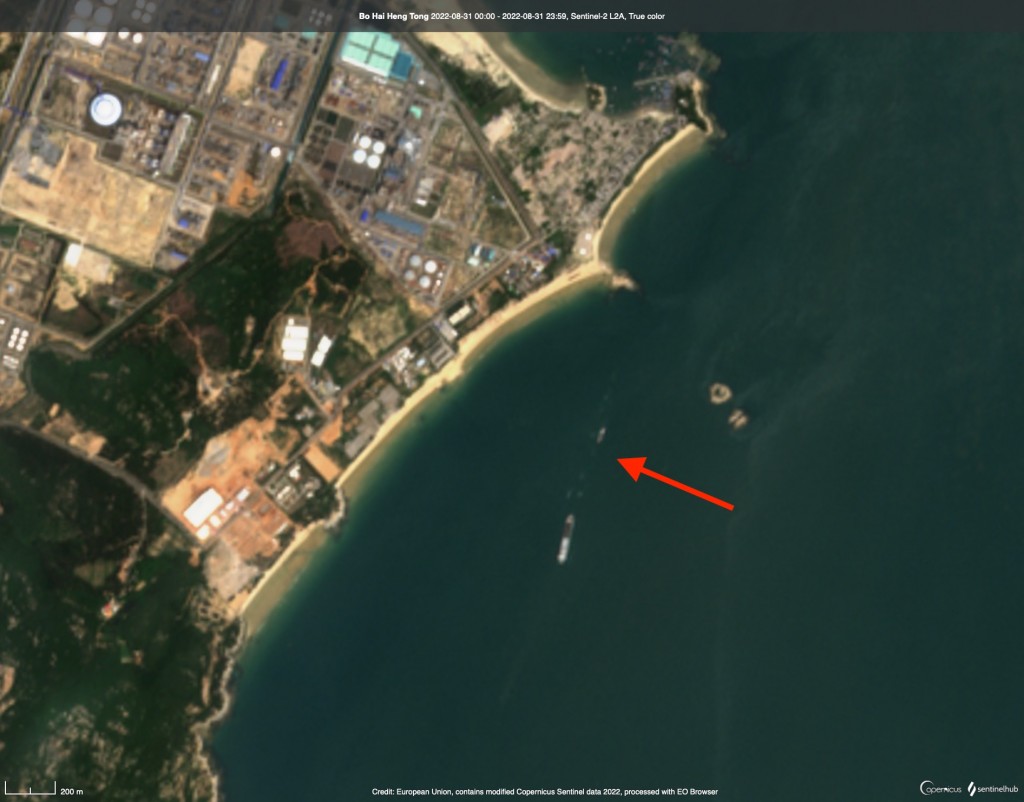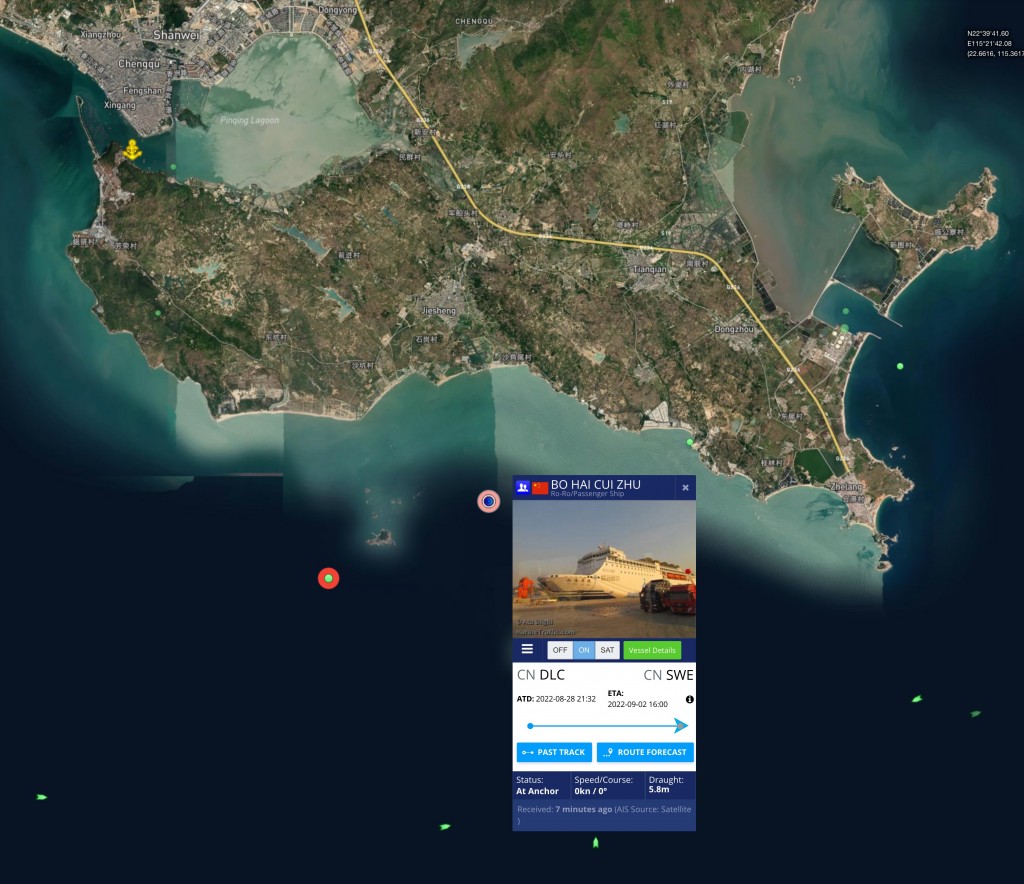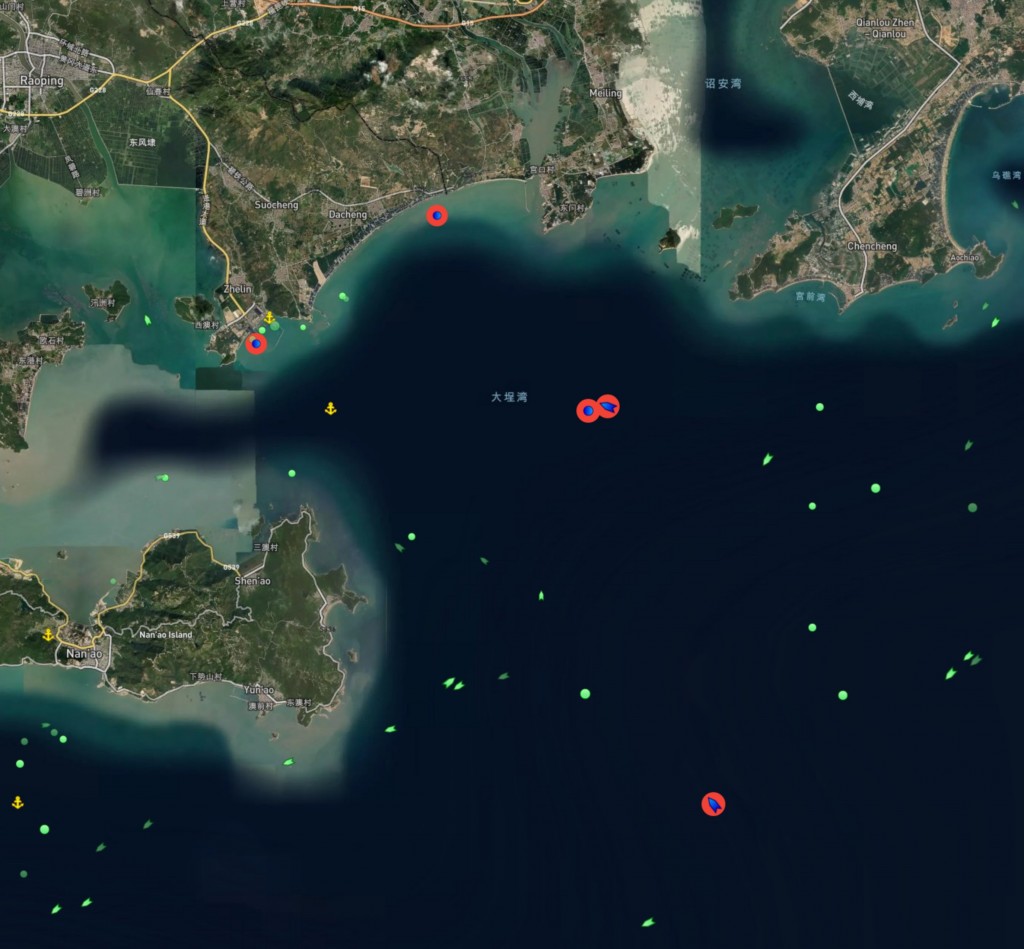Seven Chinese civilian car ferries were spotted engaging in amphibious landing drills on Chinese beaches in the Taiwan Strait late last month and early this month, with a military expert warning they could be preparations to invade the Dongsha Islands.
Defense analyst Tom Shugart tracked seven civilian roll-on roll-off (RoRo) ferries as they sailed from the Yellow Sea to the Taiwan Strait. The seven dual-purpose ferries are owned by the Bo Hai Ferry Group, which is under the PRC Maritime Militia’s Eight Transport Group when the ferries take part in People’s Liberation Army (PLA) amphibious assault and transport exercises, according to Shugart.
He identified the ships as the Bo Hai Cui Zhu, Bo Hai Ma Zhu, Bo Hai Yu Zhu, Bo Hai Jing Zhu, Bo Hai Jin Zhu, Bo Hai Zuan Zhu, and Bo Hai Heng Tong. On Aug. 30, the ships were first spotted leaving their regular Yellow Sea routes bound for Fujian Province.
Shugart wrote that the ships did not appear to be taking part in an invasion of Taiwan, but rather a PLA summer military exercise. However, Shugart warned “we can’t discount the possibility that an exercise could be a rehearsal for or cover for a surprise kinetic operation.”
He then stated that in his opinion, if a surprise assault were to take place, Taiwan’s Dongsha Islands would be the likely target. The expert reiterated that there are currently no signs of an imminent invasion of the islands.
In 2020, Shugart had warned that at one point, a PLA exercise could “turn into them storming Pratas Island (Dongsha Islands). He asserted that PLA forces would encounter little resistance, “as a fait accompli it would embarrass us and Taiwan, and would again gain them a crucial spot.”
On Aug. 31, he spotted Bao Hai Heng Tong off the coast of Gulei, which is in southwestern Fujian. He suggested that waves extending from the stern of the vessel toward the beach could indicate amphibious vehicles were moving toward these shores as part of an exercise.
Bo Hai Heng Tong spotted off beach in Gulei on Aug. 31. (Twitter, Tom Shugart image)
The analyst on Sept. 1 stated that the Da Feng Gang Li Ming Hao, a vehicle carrier from Weihai Sheng An Shipping, joined the Bao Hai Teng Tong and Bo Hai Cui Zhu as they sailed from Gulei to Shanwei in Guangdong Province.
He added that the Bo Hai Cui Zhu later stopped at Gulei as well. Due to the fact that it was also off a beach, Shugart suggested that it had carried out amphibious operations as well.
On Sept. 2, he reported that the Bo Hai Cui Zhu and Bo Hai Heng Tong were located at the eastern edge of Guangdong Province’s Honghai Bay, possibly preparing for amphibious operations. The Da Feng Gang Li Ming Hao had moved to the west in Honghai Bay and Shanwei was listed as its destination.
Bo Hai Cui Zhu spotted off coast of Honghai Bay on Sept. 2. (Twitter, Tom Shugart image)
The observer pointed out that Honghai Bay was the location of PLA amphibious assault exercises in 2020. Also of note, Honghai Bay sits directly across from Taiwan’s Dongsha Islands.
Also on Sept. 2, Shugart reported that the other five RoRo ferries were spotted in Dacheng Bay, which straddles the border between Fujian and Guangdong provinces. He noted that this was also a location where amphibious assault training had taken place in 2021 and included civilian vessels.
5 RoRo ferries spotted in Dacheng Bay on Sept. 2. (Twitter, Tom Shugart image)
Later that day, he wrote that the Bo Hai Cui Zhu, Bo Hai Jing Zhu, and Bo Hai Heng Tong appeared to have completed their missions in Honghai Bay and were heading back to the north. The other four ferries appeared to have completed their operations in Dacheng Bay and were headed north.
Shugart told USNI News that this class of 15,000-ton RoRo ferries have a “vehicle cargo capacity that’s almost three times that of a San Antonio-class amphibious warship (LPD-17).” He stated that with the development of the launching craft such last the ZTD-05, the ships can “dump the amphibious assault vehicles right into the water, which means now those ferries can be the first echelon sending assault units straight to the beach.“




